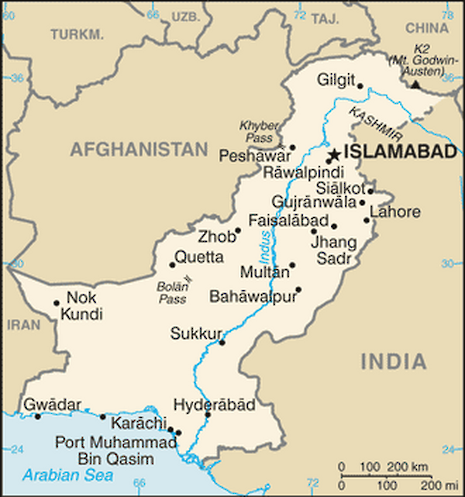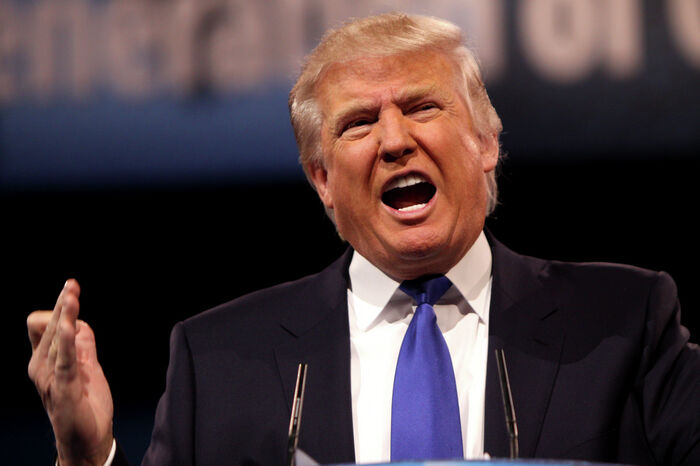Trump and Pakistan: a new hope?
With Trump’s attack on Pakistan marking the first of his 2018 tweets, Alex Reeds explores what the future of U.S. foreign policy under Trump could mean for the country

Hopes that the New Year might herald a respite from President Trump’s divisive tweeting quickly vanished when in his first tweet of 2018, Trump launched a scathing attack on Pakistan. Trump accused the country of providing refuge to extremists and threatened to cut vital US aid to Pakistan for offering “little help” in “hunting” terrorists in Afghanistan. While the timing of this tirade is perhaps surprising, its content is not and is something that needed to be said.
Pakistan’s refusal to address the issue of militant groups operating within its borders has long been a cause of regional instability and a crucial obstacle to U.S. success in the “War on Terror”. Trump’s demands are far from new. All previous U.S. administrations have pressed the Pakistani government to end their covert support of the Afghan Taliban. The FATA (Federally Administered Tribal Areas), the Pashtun-dominated Pakistani tribal regions that border Afghanistan, lie at the root of this problem. These areas have become a hotbed for radicalisation and safe havens in which international terrorist organisations train jihadists and launch attacks.
"Despite Trump appearing to be closer to Bush than Obama with his focus on harsh rhetoric over measured diplomacy, he has taken some promising steps that both his predecessors failed to make."
As long as these militants do not pose a direct threat to the Pakistani state, the government has shown no desire to crack down on them. Islamabad’s cordial relationship with the Taliban-aligned Haqqani network is a salient example. Jalaluddin Haqqani, an Afghan militant leader responsible for many serious attacks on U.S. targets, is allowed to continue to operate his terrorist network from Pakistan because he remains loyal to the Pakistani state.
The Haqqani network demonstrates that it is impossible to resolve tensions with Pakistan without concurrently addressing the Afghanistan conflict. The U.S. have been in Afghanistan for 17 years, the longest war in the country’s history, and the Taliban now controls its largest territory since being forced from power in 2001. Trump is the third President to inherit responsibility for bringing the conflict to an end. While Bush focused solely on catching Bin Laden and Al-Qaeda, Obama adopted a new strategy of “Counterinsurgency”. However, by the end of Obama’s presidency, the military and political situation in both Afghanistan and Pakistan had deteriorated significantly.
Does Trump offer any realistic hope of achieving what his predecessors could not? Above all, Trump’s Afghanistan strategy prioritises counterterrorism over nation-building. However, despite Trump appearing to be closer to Bush than Obama with his focus on harsh rhetoric over measured diplomacy, he has taken some promising steps that both his predecessors failed to make. Having announced in August the deployment of roughly 4,000 additional U.S. troops (the first surge in troop numbers since withdrawal began in 2011), Trump was right not to repeat Obama’s momentous mistake of prematurely indicating a withdrawal date. Trump also hinted that in the future the Taliban could play a part in a political settlement in Afghanistan. This is by far the most important step which needs to be taken to bring the Afghan conflict to an end. There is no military solution to this war: the negotiating table will bear more reward than U.S. bombs.
Nevertheless, the idea of a political settlement with the Taliban is still very far ahead in the future. Right now, the vital question is whether the U.S. cause a change of policy in Islamabad. Trump has made it clear that he intends to achieve this by starving Pakistan of much-needed aid in order to make it submit to U.S. wishes. He certainly seems sincere in his promise to scrap “bad deals” in which he feels America is not getting the bang for their buck. Official figures from the Congressional Research Service show the U.S. has appropriated $33bn to Pakistan since 2001. In Trump’s eyes this is clearly a “bad deal”. However, Trump needs to progress from rhetoric to action. The last 16 years have shown that Pakistan will not change its policy until they are pushed, so Trump should seriously consider placing U.S. economic sanctions on Pakistan to demonstrate his seriousness.
It is too early to tell if Trump is capable of securing a vital breakthrough, but his determination to pull the U.S. out of what he considers non-beneficial commitments (The Paris Climate Agreement and the Trans-Pacific Partnership) and his readiness to take impulsive, unilateral action (The 2017 missile strike on Syrian airfields) will serve as a stark reminder for Pakistan of the danger of maintaining proxy forces on its soil. If Trump’s administration can combine its harsh rhetoric with effective diplomacy behind closed doors, then there could be hope. However, given Trump’s penchant for impulsive behaviour and love of being in the spotlight, this might be too optimistic an assumption to make. In this case, patience and tact may prove to be the elusive trump card that the President lacks in his efforts to solve these problems
 News / Copycat don caught again19 April 2024
News / Copycat don caught again19 April 2024 Theatre / The closest Cambridge comes to a Drama degree 19 April 2024
Theatre / The closest Cambridge comes to a Drama degree 19 April 2024 Interviews / ‘People just walk away’: the sense of exclusion felt by foundation year students19 April 2024
Interviews / ‘People just walk away’: the sense of exclusion felt by foundation year students19 April 2024 News / AMES Faculty accused of ‘toxicity’ as dropout and transfer rates remain high 19 April 2024
News / AMES Faculty accused of ‘toxicity’ as dropout and transfer rates remain high 19 April 2024 News / Acting vice-chancellor paid £234,000 for nine month stint19 April 2024
News / Acting vice-chancellor paid £234,000 for nine month stint19 April 2024





